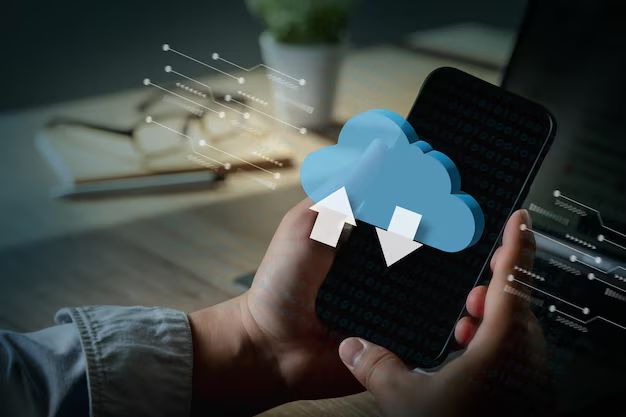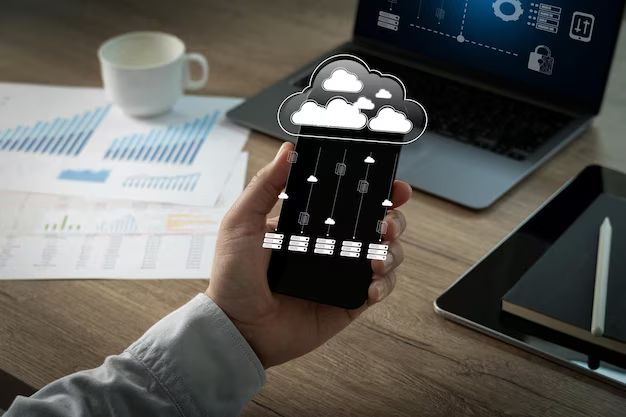Why Observability Matters More Than Logging in Cloud Apps

When a cloud app misbehaves, the first instinct is to check the logs. But logs alone rarely tell the full story anymore. Modern systems are too distributed, too fast, and too interdependent. You need cloud app development with observability in mind. Not just logging. It will help you understand what’s really happening between those layers of microservices, APIs, and infrastructure.
In complex cloud environments, over 70% of incidents involve cross-service dependencies that pure logging can’t expose (IDC, 2024). Observability fills that visibility gap.
Logs 101: Why We Started There
Logs were the first diagnostic tool in computing. They capture events: errors, warnings, and information about what the system did. They work well for monoliths or single-node systems.
Why logs helped for decades
- They’re human-readable, easy to grep or search.
- Developers can trace a user action back to a specific code path.
- Tools like ELK stacks made search and visualization easier.
Why logs struggle today
Cloud apps changed the game:
- Each service logs independently; correlation is painful.
- Volume explodes fast; one app can generate terabytes per day.
- Missing context: log levels and timestamps don’t show why something failed.
Gartner estimates that enterprises waste 35–50% of log storage on redundant or non-actionable entries. Logs are useful, but without relationships between events, they become noise.
Monitoring vs Observability: The Missing Link
Monitoring came next to detect system health through metrics like CPU, memory, and latency. But it only answers “is it up?”; not “why is it slow?”
How monitoring helps
- Detects anomalies via thresholds or alerts.
- Surfaces trends (rising latency, memory leaks).
- Works great for known failure conditions.
Where it fails
- Cannot explain unknown failure modes.
- Doesn’t provide user-journey context.
- Relies on static thresholds that miss intermittent problems.
According to Datadog, 43% of cloud incidents are detected only after user complaints, proving that monitoring alone isn’t enough. Observability extends beyond static metrics to provide narrative context.
Monitoring sees the smoke; observability finds the fire.
What Observability Really Means

Observability is basically a system property. It means you can infer a system’s internal state from what it outputs.
Together they tell the story of “what,” “where,” and “why.”
- Logs — individual event context.
- Metrics — numerical signals showing health and trends.
- Traces — request flows across distributed systems.
Many platforms now add a fourth pillar, that is profiling, which exposes CPU or memory hotspots.
Teams using all three pillars (logs, metrics, traces) report up to 90% faster incident resolution and 65% fewer repeat outages, according to Dynatrace’s 2024 observability benchmark.
Mature companies integrate observability directly into CI/CD, treating telemetry as code. This makes debugging part of deployment, not postmortem analysis.
What You Gain Over Logging Alone
Logs tell you what happened; observability tells you why and where it happened.
Real-world benefits:
- Contextual root cause analysis (RCA): correlate latency, requests, and downstream errors.
- Faster recovery: traces highlight bottlenecks immediately.
- Proactive detection: anomaly detection on metrics finds issues before logs even fire.
- Reduced storage costs: sampling traces or metrics replaces verbose log spam.
Example: Netflix used observability-driven tracing to cut RCA time from hours to minutes, reducing major incident impact by 65%. Similarly, Shopify reduced its mean time to detect issues (MTTD) by 74% after adding distributed tracing to its monitoring pipeline.
Added benefit: Observability enables SLO-based alerting, tying system health to real user experience instead of raw infrastructure metrics.
Building Observability in Cloud Apps
You don’t buy observability. You design for it.
Core design steps:
- Instrument everything: add telemetry hooks across APIs, queues, and background jobs.
- Use correlation IDs: tie logs, metrics, and traces together per request.
- Adopt standards: implement OpenTelemetry for vendor-neutral data collection.
- Define SLIs/SLOs: measure what users feel beyond infrastructure uptime.
- Store smart: sample, aggregate, and prune data by relevance and retention policy.
Tooling examples:
- OpenTelemetry for instrumentation.
- Prometheus + Grafana for metrics and dashboards.
- Jaeger or Tempo for tracing.
- Elastic or Splunk for centralized search.
Pro tip: Start by instrumenting your top 3 customer-impacting services before scaling out. This delivers 80% of observability value with 20% of the effort.
Fact: In cloud-native systems, 90% of mean-time-to-resolution (MTTR) improvement comes from better context correlation, not faster alerts.
Pitfalls and Anti-Patterns
Observability can fail if implemented carelessly.
Common traps:
- Over-instrumentation — too many signals, too little focus.
- Ignoring trace context — data without correlation is noise.
- Missing tagging — no user_id or request_id fields break linkage.
- Storing everything forever — costs spiral fast.
What strong teams do differently:
- Define log levels and structured formats (JSON) early.
- Centralize dashboards per business domain.
- Apply retention policies by data type (e.g., logs 14 days, traces 7, metrics 30).
- Automate anomaly detection using ML-based thresholds.
Elastic reports that over 60% of new observability users underestimate data volume growth by 3–5× in the first year. Cost controls are part of the design.
Quick Audit Checklist
A simple framework for evaluating your observability maturity:
| Area | Checkpoint | Why It Matters |
| Logs | Structured (JSON) with correlation IDs | Enables linking across requests |
| Metrics | Include latency, error rate, throughput (LET) | Foundational for SLIs/SLOs |
| Traces | End-to-end with span context | Shows dependencies and timing |
| Sampling | Adaptive rate per workload | Balances cost vs insight |
| SLIs/SLOs | Based on user experience impact | Prevents alert fatigue |
| Alerting | Linked to business KPIs, not infra-only | Aligns teams around customer health |
Pro tip: Treat your observability stack as living code: version control dashboards, alert definitions, and sampling configs. This ensures traceability and governance.
Observability in Action: Tooling Snapshot

Leading ecosystems already support unified observability:
- OpenTelemetry: industry-standard API and SDK for distributed tracing.
- Grafana + Prometheus: metrics and dashboards.
- Jaeger / Tempo: tracing visualization.
- Elastic / Splunk: cross-pillar search.
- Datadog, New Relic, Dynatrace: all-in-one commercial stacks.
AI-assisted observability platforms (like Dynatrace Davis AI and Datadog Watchdog) now summarize trace anomalies, detect hidden dependencies, and correlate alerts using LLMs, reducing alert noise by up to 60%.
Google Cloud’s internal observability initiative reduced mean-time-to-detect by 84% across its managed service suite by merging trace and metric layers into a single unified data plane.
Wrap-up
Logs are the memory; observability is the understanding. In distributed cloud environments, you need both, but observability is the layer that connects dots across services, teams, and time. Start small, instrument smart, and build visibility as an architectural principle, not a postmortem wish list.
